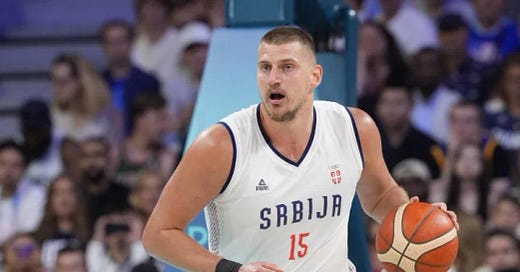The "dog mentality" — built on relentless aggression, constant grind, and performative toughness — has been glorified as the highest standard of competitive character. But beneath the primal facade lies psychological fragility: a mind anchored to external hype, dependent on perpetual motion to avoid confronting deeper limitations. This essay deconstructs the traditional obsession with "dog" culture, analyzes the emergence of the intellectual athlete who marries intensity with cognitive mastery, and introduces a framework for integrating ferocity with disciplined strategic thinking. The issue isn’t the existence of the "dog" — it’s who holds the leash. When aggression is internal, disciplined, and self-directed, it transforms from a reactive identity into a controlled, strategic weapon. Because in modern elite performance, raw fire alone is no longer enough — precision thinking is the new competitive edge.
The Archetype of the "Dog"
For decades, athletes have been celebrated for embodying the "dog" — that tireless, vicious embodiment of grit and aggression. Entire careers have been built on the back of this branding: "He’s got that dog in him." "She never stops." "They’ll die before they quit."
But the "dog" archetype, while intoxicating, is a shallow blueprint. It reduces complex human performers to single-dimensional avatars of intensity. The athlete becomes a mascot for grind culture — endlessly moving, always angry, addicted to the narrative of being "built different."
Psychologically, this archetype feeds a dangerous illusion: that effort alone guarantees dominance, that endless energy replaces strategic mastery, that emotion equals effectiveness. In reality, the athlete who depends solely on raw aggression is brittle. When physical resources wane or adversity scales, these athletes often collapse internally, having built no cognitive structure to adapt or recalibrate.
The Fragility Behind the Growl
Intensity is easy. Sustained, intelligent adaptation is rare.
Athletes who weaponize only their aggression risk creating a dependency on hype. They require external friction to activate performance: a slight from a commentator, a rival's trash talk, a perceived disrespect. When that external fuel is absent, their system falters.
Moreover, this dependency conceals emotional avoidance. The "dog" often hides mental vulnerability behind volume and motion. Training sessions become punishment, injuries ignored, sleep sacrificed — all in service of maintaining the appearance of relentless toughness.
When setbacks inevitably arise — injuries, losses, role changes — athletes reliant only on grind culture lack the psychological elasticity to pivot. The intensity that once seemed like a weapon now cages them inside their own identity performance.
Rise of the Cerebral Competitor
A new breed is emerging: athletes who combine aggression with strategic mental discipline — intellectual athletes.
These competitors understand when to activate intensity and when to retreat into observation. They know when to explode and when to conserve. Their self-concept is not tied to perpetual motion but to intelligent execution.
Look at the measured, precise command of Nikola Jokić, who dictates game pace without dramatic outbursts. Observe Shohei Ohtani, toggling seamlessly between pitcher and hitter roles while preserving emotional equilibrium. Watch Kawhi Leonard, often criticized for stoicism, yet consistently delivering under pressure without feeding off external frenzy.
These athletes operate on principles of adaptability, emotional sovereignty, and cognitive trust. They do not require enemies to play well. They do not rely on emotional chaos to summon focus. They are architects of their own performance environment.
Framework: Building the Intellectual Athlete
Strategic Aggression
Intensity is a tool, not a personality. Learn to deploy aggression selectively — in moments that demand it, not as a permanent state.Emotional Sovereignty
Decouple performance from external hype. Build the ability to anchor emotional states internally, independent of outside distraction or validation.Cognitive Recovery
Cultivate mental composure as seriously as physical conditioning. Use downtime to analyze, not escape. Train your mind to embrace reflection rather than compulsive action.Identity Diversification
Do not allow "competitor" to be your only self-definition. Develop interests, relationships, and skills beyond sport. A multidimensional self-concept enhances psychological resilience and prolongs performance longevity.
The New Edge
The future belongs to athletes who can toggle between primal ferocity and surgical analysis — those who can be wolves one moment and chess masters the next.
Toughness is no longer just measured by who can outlast the grind. It is measured by who can stay present in chaos, who can control emotional volume, who can make precise decisions when the environment demands instinctual reaction.
The intellectual athlete is not weaker than the "dog" — they are the evolved version. They are unshaken by external narrative, unhooked from constant adrenaline, and driven by internal standards no crowd can reach.
The question is no longer whether the "dog" exists within you — but whether you possess the discipline to command it so fully that it becomes your silent ally rather than your unruly sovereign.
The Decisive Line
Decide with finality: Do you want to be known for noise, or for nuance?
Because in the coming era of sport, it will not be the loudest who thrive — but those who can think sharply, adapt ruthlessly, and remain composed when the primal roar fades.
Suggested References
Gurner, Julie. Public writings on high standards and radical self-ownership.
Dweck, Carol S. Mindset: The New Psychology of Success.
Kaufman, Scott Barry. Transcend: The New Science of Self-Actualization.
Ravizza, Ken. Heads-Up Baseball: Playing the Game One Pitch at a Time and other works on mental performance and psychological flexibility in athletes.
Baumeister, Roy F., & Tierney, John. Willpower: Rediscovering the Greatest Human Strength.



